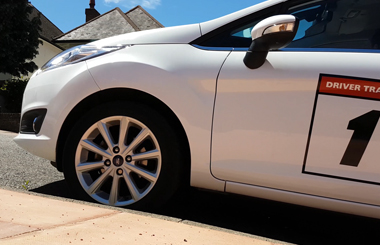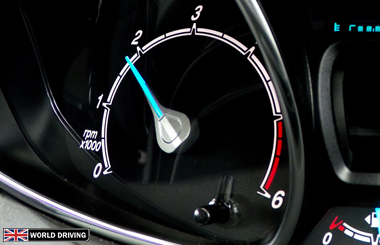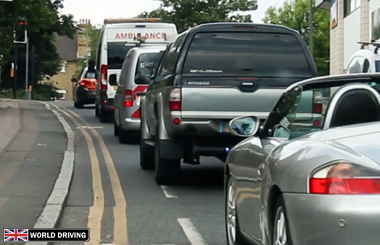Video on how to do hill starts at traffic lights
Subscribe for more tips on our YouTube channel
Hill starts
Approaching a red traffic light on a hill in a manual car can make new drivers feel quite anxious. Here's our rough guide on how to deal with traffic lights on a hill successfully in a manual car, breaking it down step-by-step.
Practice on a quiet road first.

Before tackling traffic lights on an uphill, practise hill starts somewhere where there isn't any pressure from other drivers.
How to do a hill start is similar to how you normally move off on a flat road except you'll need a bit more gas and having the biting point will be essential. Practice finding the biting point in your car.
How to do a hill start is similar to how you normally move off on a flat road except you'll need a bit more gas and having the biting point will be essential. Practice finding the biting point in your car.
How to do a hill start.

To do a hill start successfully you'll have to press the clutch down and change into 1st gear. The car will need a bit more power than normal for the uphill. Setting the revs roughly up to about 2 but be careful not to stare at the rev counter.
Hold your right foot still as you raise the clutch to the biting point. You know when you've got the biting point as the back of the car dips down slightly and the engine sound changes. You'd definitely roll backwards without the biting point, which is something you don't want as there might be a pedestrian or another vehicle behind.
Make sure it's safe, signal if needed, release the parking brake (handbrake), keep your feet still for a couple of seconds as the car starts moving and then slowly raise the clutch up with a little more gas.
Before you change up a gear make sure you speed up more than you would normally on a flat road or the car will struggle up the hill and possibly stall.
Top reasons for stalling when moving off uphill are lifting your foot off the clutch too soon or not giving it enough gas.
Hold your right foot still as you raise the clutch to the biting point. You know when you've got the biting point as the back of the car dips down slightly and the engine sound changes. You'd definitely roll backwards without the biting point, which is something you don't want as there might be a pedestrian or another vehicle behind.
Make sure it's safe, signal if needed, release the parking brake (handbrake), keep your feet still for a couple of seconds as the car starts moving and then slowly raise the clutch up with a little more gas.
Before you change up a gear make sure you speed up more than you would normally on a flat road or the car will struggle up the hill and possibly stall.
Top reasons for stalling when moving off uphill are lifting your foot off the clutch too soon or not giving it enough gas.
Trying a hill start uphill at traffic lights for the first time.

You might feel a little bit more pressure to go quickly when doing a hill start at traffic lights or you might feel anxious about rolling back because there's other drivers behind. But stay focused on what you need to do and just remember how you did the hill starts on the quiet road.
Turning right at traffic lights uphill.

In this example, I'm turning right at the crossroads. It's a red light and I've stopped at the solid line before the cyclist area. I've applied the parking brake and selected neutral. Now I can rest my feet.
But how do we know when to prepare to go? The traffic going across will be next and once they stop it could be a green man for the pedestrians. If the pedestrians are next then look out for the green man changing to a red man. Once the red man is on, prepare to go as you don't want to panic. Only start moving once you get a green light.
How to prepare the car to go:
1. Press the clutch.
2. Change into 1st gear.
3. Press the gas to get the revs up to about 2.
4. Raise the clutch to the biting point so that you feel the back of the car dip slightly and the engine sound change.
5. When you want to move, keep your feet still as you release the parking brake to go.
Lower the clutch down to slow down or raise it to speed up.
It takes plenty of practise with a qualified driving instructor or accompanying driver to really perfect hills starts.
But how do we know when to prepare to go? The traffic going across will be next and once they stop it could be a green man for the pedestrians. If the pedestrians are next then look out for the green man changing to a red man. Once the red man is on, prepare to go as you don't want to panic. Only start moving once you get a green light.
How to prepare the car to go:
1. Press the clutch.
2. Change into 1st gear.
3. Press the gas to get the revs up to about 2.
4. Raise the clutch to the biting point so that you feel the back of the car dip slightly and the engine sound change.
5. When you want to move, keep your feet still as you release the parking brake to go.
Lower the clutch down to slow down or raise it to speed up.
It takes plenty of practise with a qualified driving instructor or accompanying driver to really perfect hills starts.
 |